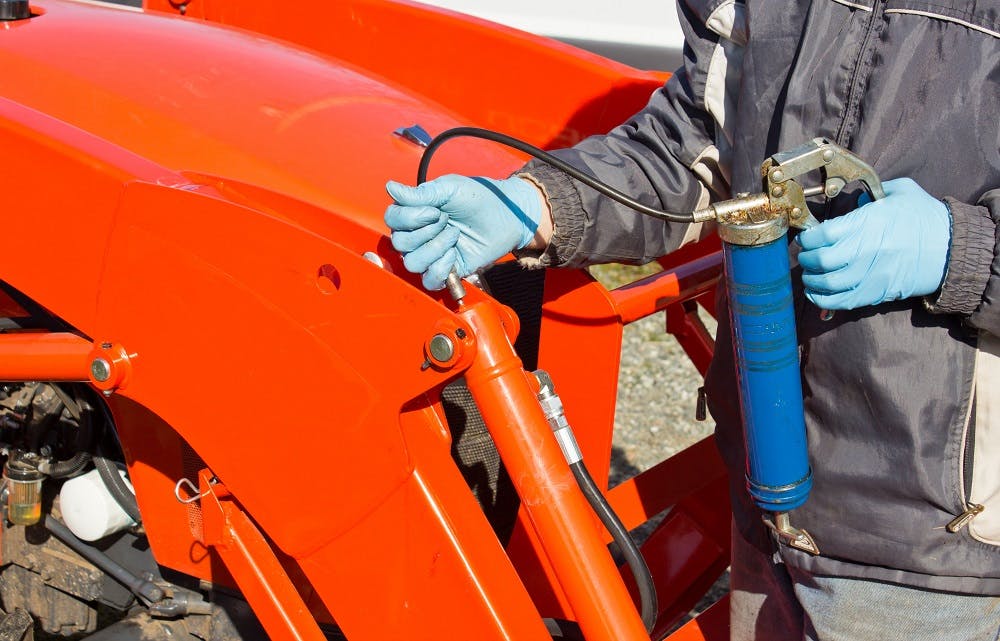Proper Equipment Lubrication for Longevity and Performance

For long life and smooth operation, lube your equipment properly
Most farm equipment is used seasonally, making proper greasing of tractors, planters, tillage and harvesting equipment an important part of maintenance.
What happens if you don’t? Neglectful owners have found it can lead to premature wear and tear, costly repairs, and downtime when you can least afford it.
Check out these reminders on how to lube correctly.
Use your eyes first: Begin with a thorough inspection of your equipment to identify grease points, zerk fittings, and lubrication areas. Refer to your owner’s manual to make sure you identify all lubrication points.
What’s the right grease? Again, refer to the owner’s manual for the proper lubrication material—one that can offer adequate protection against water, dirt, and extreme temperature variations, the key factors that accelerate wear.
Follow a schedule: Establish a strict greasing schedule based on your equipment’s operating usage. Note that greasing too often can actually cause damage and promote a messy equipment, while under-greasing can lead to excessive friction and accelerated wear. Stick to the recommended greasing intervals outlined in the equipment’s manual.
Clean before lube: Prior to applying the grease gun, clean the greasing points thoroughly to prevent contaminants from entering the fittings. Wipe off any debris, dirt, or old grease residue.
Use a grease gun and extension: You already have a high-quality grease gun with an extension hose to reach difficult-to-access greasing points, right? If not, you’ll need these. The extension maintains a safe distance from any moving parts and minimizes accidental grease spills.
Check for perfect pressure: Manufacturer recommendations often include the appropriate grease gun pressure for each fitting. Over-pressurizing can cause damage, while inadequate pressure may not provide proper lubrication.
Record your work: Maintain a detailed record of each greasing session, noting the date, equipment hours, and type of grease used. Not only will this help you track maintenance history and plan future greasing intervals accurately—it also takes guesswork out of the equation.
Best source for answers: The two best sources for any lubrication questions, including greasing locations and other specifics, are your owner’s manual and your local dealer. Nobody wants to burden their dealer with I-need-it-today repairs during harvest or planting seasons, so something as simple as answering any grease and lube questions ahead of time can keep everyone happy.
By following these top tips for greasing your equipment, you’ll find a well-greased machine operates as the manufacturer intended.

